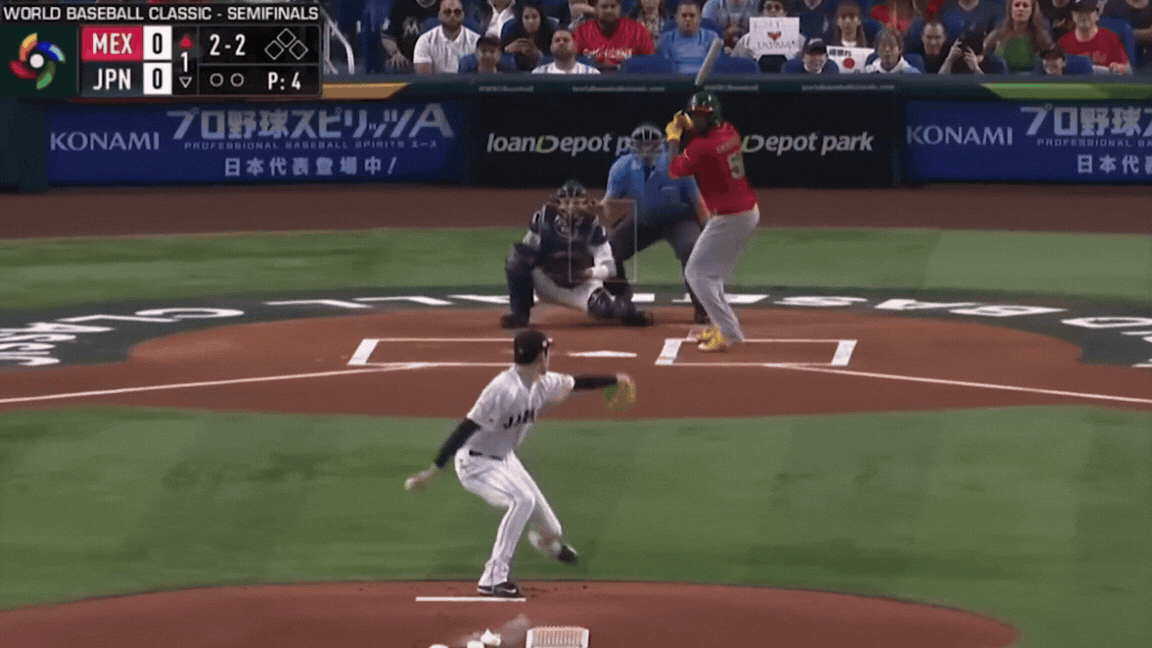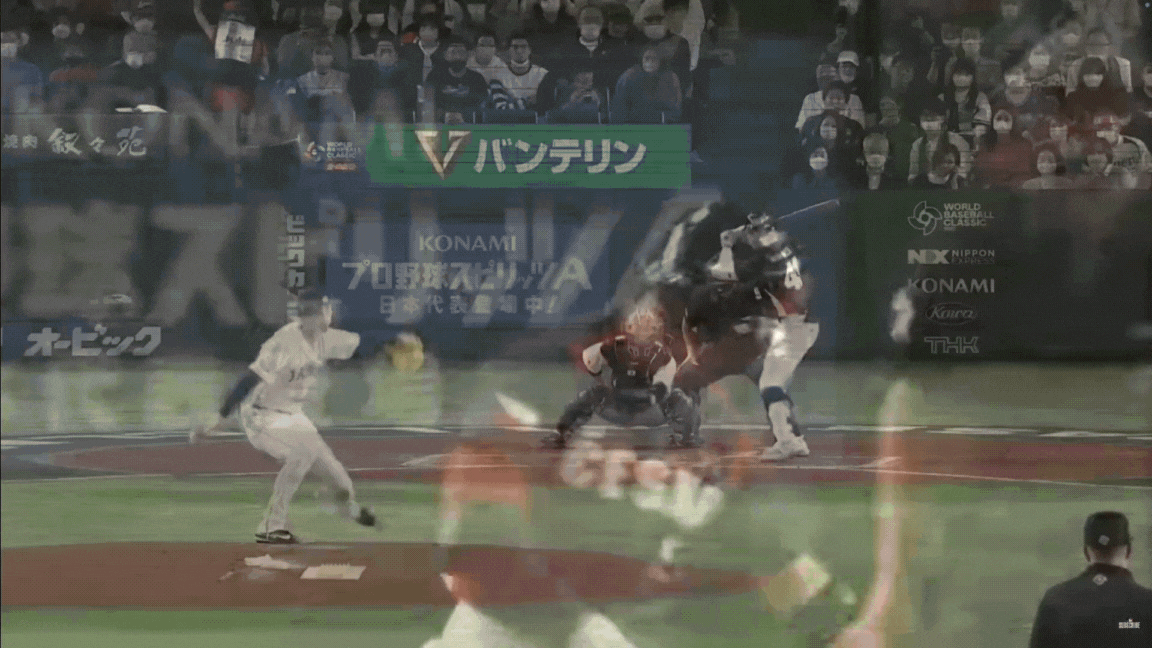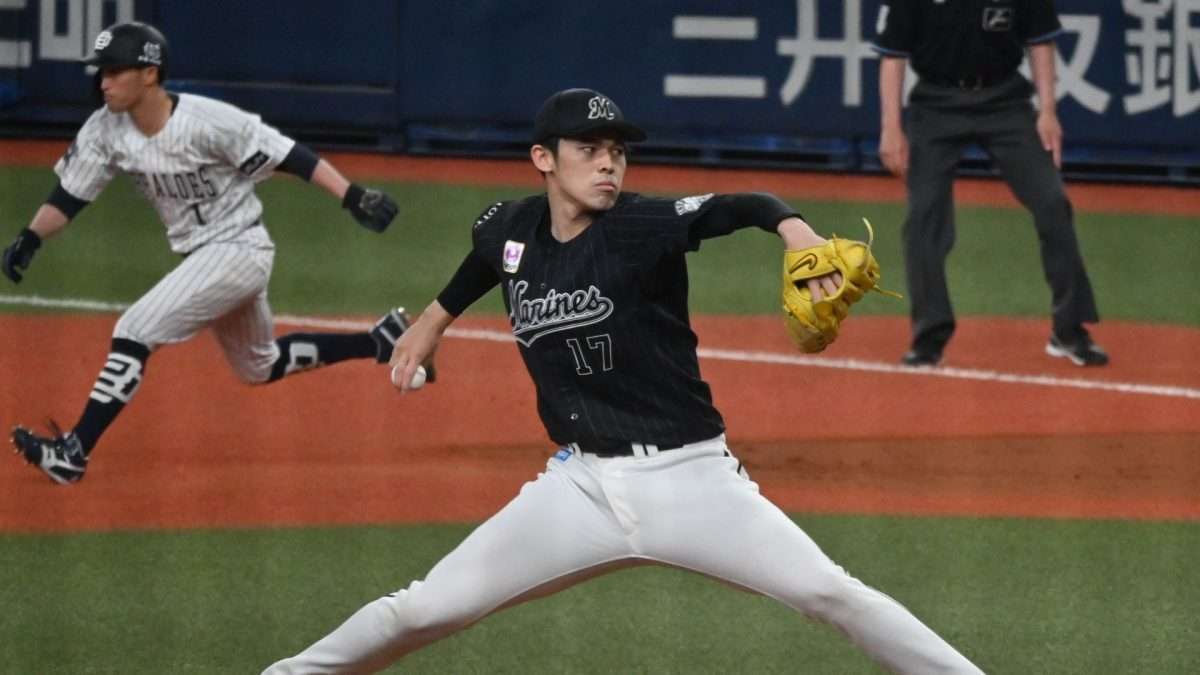Roki Sasaki is a name you’re going to be hearing a lot about in the coming days. The 23-year-old Japanese ace was just posted to MLB teams last week during baseball’s Winter Meetings.
The pitching phenom is the most exciting Japanese hurler to make their way to the United States since Yoshinobu Yamamoto and possibly even Shohei Ohtani.
As we’ll see, the hype over Sasaki is totally justified.
Who is Roki Sasaki?
Sasaki boasts a 100-mph-plus fastball and one of the nastiest splitters you’ll ever see.
A starting pitcher for the Chiba Lotte Marines in Japan’s Nippon Professional Baseball (NPB) league, Sasaki already has a perfect game under his belt, which he pitched at the age of 20.
He could have pitched two in a row, but his manager pulled him out after eight perfect innings in his next start.
In that perfect game, Sasaki recorded an incredible 19 strikeouts — including 13 of them consecutively.
Velocity King
In high school, Sasaki’s fastball reached 101 mph, drawing comparisons with Ohtani and making him a no-brainer NPB number one draft pick in 2019.
The world got to see Sasaki light it up at the World Baseball Classic in 2023, with his fastball hitting 102 mph on the radar gun.

Sasaki’s career numbers are impressive, with a 2.10 ERA and a 29-15 win-loss record. He’s recorded 505 strikeouts in 394.2 innings and has impeccable control, boasting a 5.76 strikeouts-to-walks ratio.
Mr. Splitty
Japan is the land of the splitter. And, unsurprisingly, Sasaki has a pretty nasty one — with a sharp drop and low-90s velocity. It makes for a brutal combination with his fastball.

The Durability Factor
Now, there are some concerns over Sasaki’s durability. His average velocity dipped this past season to below 97 mph. It’s unclear whether this is temporary due to an oblique injury.
Sasaki’s splitter is also a double-edged sword. It’s believed to contribute to elbow and UCL injuries, including those among Japanese pitchers, such as Daisuke Matsuzaka and Masahiro Tanaka.
Where Will He Go?
Since Sasaki is under 25, he qualifies as part of the international amateur signing class and can only sign a minor league deal. So that means every MLB team has the financial space to contend for him. But there are some favorites.
L.A., Of Course
Many see the Los Angeles Dodgers as the inevitable destination for Sasaki. The Dodgers, it seems, just can’t get enough of hoarding baseball’s best talent.
The draw of L.A. is obvious: its proximity to Japan, a roster stacked with Japanese stars, and a strong chance of experiencing winning on baseball’s biggest stage instantly.
But the Dodgers already have a six-man rotation, led by the newly acquired Blake Snell and Yamamoto.
Sunny San Diego
There are three reasons why Sasaki could go to the Padres. The media-shy Sasaki is said to prefer a smaller market. San Diego is not only a West Coast alternative, but its rotation also includes Sasaki’s idol Yu Darvish.
Darvish could serve as a mentor for Sasaki and play a pivotal role in his development — especially given the range of his pitching arsenal. They also share the same agent: Joel Wolfe.
For the Padres, the addition of a top-tier starter at a discount would allow them to trade ace Dylan Cease, bring down payroll, and get some young assets in return.
The Bronx
The Yankees don’t have the Dodgers’ absurd wealth of starters, but they come close. The acquisition of Max Fried adds to a rotation that includes Gerrit Cole, Carlos Rodón, and Luis Gil.
The Yankees are reportedly looking to shop one of their additional starters, Clarke Schmidt or Marcus Stroman, in a package deal to fill their holes in the lineup. Acquiring Sasaki would give them the flexibility to deal more pitching assets in exchange for a big bat to make up for the loss of Juan Soto.
The Bronx also has a rich history of welcoming Japanese greats like Hideki Matsui and Tanaka — and, briefly, Ichiro Suzuki.
Cohen’s Kings of Queens
And then there are the New York Mets. The Amazins still need to get a lot more amazing, particularly on the pitching end.
Their rotation is wobbly after their number one and two starters Kodai Senga and David Peterson. The newly acquired Clay Holmes, a former Yankees closer, will be the Mets’ fourth starter. He’s untested in that role.
If the Mets want to get past the Dodgers in the NL playoffs in 2025, they’ll have to have a deeper rotation.
Money may not be an issue for Steve Cohen’s Mets, but Sasaki could be a cost-efficient upgrade to their rotation. And he’d be joining a team that’s on an upswing.
Others in the Mix
Agent Wolfe said last week that Sasaki’s priorities include: weather, comfort, and pitching development. The Tampa Bay Rays may fit the bill on at least two of those fronts.
Given his modest salary, Sasaki may also look to boost his earnings with endorsements. That would be more likely were he to play in a large market. Boston, Chicago, Philadelphia, and San Francisco are also in the mix, according to Jim Bowden.
The 45-day bidding window for Sasaki opened last Tuesday, but the pitcher is expected to sign after the 2025 signing period begins on January 15.
So we’ll find out where MLB’s next big star is landing in the second half of next month. And we’ll get to see his electric stuff stateside come Spring Training.
Globely News covers the game changers transforming the worlds of business, sports, politics, and technology. From AI and electric vehicles to the rise of China and the NFL's next stars, we've got you covered.



